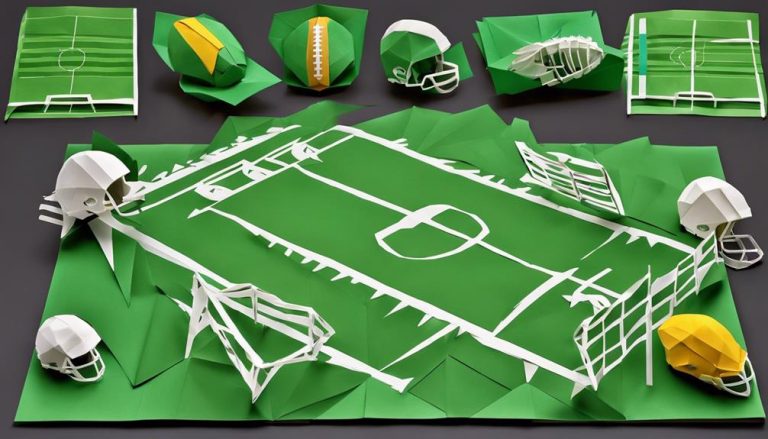General Rules of Mud Bogging
When it comes to the world of mud bogging, there's more to it than just revving your engine and plowing through the muck. Before you hit the trails, make sure you're familiar with the general rules that govern this thrilling off-road sport. From safety gear requirements to penalties for rule violations, understanding the guidelines is important for a successful and enjoyable mud bogging experience. So, grab your helmet and buckle up as we take a closer look at what it takes to navigate the muddy terrain with skill and precision.
Safety Gear Requirements
Before participating in mud bogging, make sure you have all the necessary safety gear in place. Safety precautions are essential in ensuring a thrilling yet secure experience. Gear essentials include a properly fitting helmet to protect your head from impacts and debris. Goggles or a face shield are critical to shield your eyes from mud splatters and flying debris. Wearing a fire-resistant racing suit can provide protection in case of engine fires or other unforeseen incidents.
In addition to the gear essentials, it is essential to be prepared for emergency response and medical assistance. Having a well-equipped first aid kit on hand is a must. The kit should include items like bandages, antiseptic wipes, and pain relievers to address minor injuries. Before beginning your mud bogging adventure, make sure that you have a clear understanding of the emergency protocols at the event. Knowing where the nearest medical assistance is available can be critical in urgent situations.
Vehicle Specifications
Ensuring your vehicle meets specific specifications is important for a successful and safe mud bogging experience. When it comes to engine power, having a robust engine is critical for traversing through the challenging terrain of mud bogs. A high-powered engine provides the necessary torque and horsepower to propel your vehicle through the thick mud with ease. Make sure your vehicle's engine is in prime condition to handle the demanding nature of mud bogging.
Another vital aspect to take into account is tire size. Larger tires with deep treads are ideal for gaining traction in muddy conditions. The increased surface area of larger tires helps prevent your vehicle from getting stuck and provides better grip when maneuvering through the mud. It is recommended to invest in tires specifically designed for off-road and mud bogging purposes to guarantee maximum performance.
Before hitting the mud bog, double-check that your vehicle meets the engine power and tire size requirements for a smooth and successful ride. Upgrading your engine for more power and investing in quality, large tires can greatly enhance your mud bogging experience. By adhering to these specifications, you'll be better equipped to tackle the challenges of mud bogging with confidence and excitement.
Course Boundaries and Flags
When traversing a mud bogging course, understanding the designated boundaries and flags is significant for a safe and successful experience. Course boundaries are set to guarantee the safety of participants and spectators. It is essential to stay within these boundaries to prevent accidents and maintain the integrity of the event. Straying outside of the designated course area can lead to disqualification and poses risks to both individuals and equipment.
Flag signals play an important role in communicating important messages to drivers during a mud bogging event. Different flag colors and movements convey specific instructions that participants must adhere to. For example, a green flag typically signals the start of a run, while a red flag indicates that the run must stop immediately due to safety concerns. Understanding and obeying these flag signals is crucial for maintaining order and preventing chaos on the course.
To ensure a smooth and efficient mud bogging experience, familiarize yourself with the course boundaries before starting your run. Pay close attention to flag signals and respond promptly to any instructions given by the flaggers. By respecting course boundaries and flag signals, you contribute to a safer environment for all participants and enhance the overall enjoyment of the event.
Spectator Safety Guidelines
When attending a mud bogging event, remember to stay within designated spectator viewing areas for your safety. Make certain there are proper barriers and a safe distance between you and the vehicles to prevent any accidents. Familiarize yourself with emergency exit routes in case you need to leave quickly in an emergency.
Spectator Viewing Areas
Positioned strategically around the mud bogging course are designated spectator viewing areas that offer excellent vantage points for observing the thrilling action while ensuring the safety of all onlookers. These areas are equipped with convenient access to food vendors and comfortable seating arrangements, allowing you to enjoy the event to the fullest. It is essential to adhere to parking restrictions and be mindful of the event schedule to make the most of your mud bogging experience. By following these guidelines, you can immerse yourself in the excitement of the sport while prioritizing your safety and comfort. Make sure to take advantage of the designated viewing areas to witness the adrenaline-pumping mud bogging action up close.
Barrier and Distance
For best safety during mud bogging events, make sure that barriers are in place and maintain a safe distance from the course at all times. Spectator barriers and proper viewing angles are essential for a secure viewing experience. Distance markers should be clearly visible, guiding spectators on how far they should stay from the course. Safety precautions such as maintaining a safe distance from the mud bogging area and obeying the designated barriers are important. Here are three key points to remember:
- Spectator barriers guarantee a safe distance between the audience and the mud bogging course.
- Best viewing angles provide spectators with the finest vantage points while keeping them out of harm's way.
- Following distance markers and safety guidelines is crucial for a secure and enjoyable mud bogging event.
Emergency Exit Routes
To guarantee the safety of spectators during mud bogging events, understanding the designated emergency exit routes is imperative. In the event of any unforeseen circumstances, having clear paths for evacuation can make a significant difference. Below is a table outlining key emergency exit routes to keep in mind:
| Emergency Exit Route | Location | Accessibility | Notes |
|---|---|---|---|
| Main Entrance | Front of the venue | High | Clearly marked and well-lit |
| Side Gate | Left side of track | Medium | Staff assistance may be required |
| Rear Exit | Behind bleachers | Low | Use in non-emergency situations |
Always be aware of these exits, especially during mud bogging events where vehicle maintenance and weather conditions can impact safety. Stay informed and prepared to guarantee a smooth and secure experience.
Starting Line Procedures
As you approach the starting line at a mud bogging event, make sure that your vehicle is in prime condition and ready for the challenge ahead. The starting line sets the tone for your run, so it's important to follow starting line procedures diligently. Here are some key points to keep in mind:
- Starting Line Etiquette and Crowd Control: Maintain a safe distance from other vehicles while waiting for your turn. Respect other participants and the event staff. Keep the starting area clear of non-essential personnel to guarantee a smooth start.
- Flag Signals and Countdown Timing: Pay close attention to the flag signals given by the event officials. Green flag means go, while a red flag indicates stop. The countdown timing is important; make sure you are ready to start when the flag drops or the countdown reaches zero.
- Vehicle Readiness Check: Before approaching the starting line, do a final check of your vehicle. Make sure that all safety equipment is properly secured, the engine is running smoothly, and the tires are at the correct pressure. A well-prepared vehicle increases your chances of a successful run.
Penalties and Disqualifications
When facing penalties and potential disqualifications in mud bogging events, understanding the rules and regulations is important for maintaining a fair and safe competition environment. Penalty enforcement in mud bogging is essential to make sure that all participants adhere to the established guidelines. Common penalties include time penalties for missing a gate or going out of bounds, weight penalties for not meeting vehicle requirements, or even disqualification for violating safety regulations. It is essential to familiarize yourself with the penalty system specific to the event you are participating in, as enforcement can vary.
Disqualification criteria are typically outlined in the event's rules and regulations. Disqualification may occur if a competitor fails to follow safety protocols, displays unsportsmanlike conduct, or tampers with their vehicle to gain an unfair advantage. Additionally, exceeding specified noise levels, disobeying flag signals, or not wearing required safety gear can also lead to disqualification. Understanding the disqualification criteria beforehand can help you avoid unnecessary penalties and make sure a smooth competition experience.
Frequently Asked Questions
Can Children Participate in Mud Bogging Events?
Sure, kids can participate in mud bogging events with parental supervision. Safety regulations guarantee a fun experience. Age restrictions and participation guidelines exist to keep everyone safe and guarantee a thrilling time for all.
Are There Any Specific Rules Regarding the Use of Aftermarket Modifications on Vehicles?
When it comes to aftermarket modifications on vehicles for mud bogging, it's important to prioritize safety. Laws and regulations often dictate what changes are permissible. Always make certain that any modifications enhance performance without compromising vehicle safety.
What Happens if a Vehicle Breaks Down During a Race?
If your vehicle breaks down during a race, pit crew assistance is usually allowed for minor repairs. If recovery is needed, tow trucks or vehicles may be used to retrieve your vehicle from the mud pit.
Are There Any Restrictions on the Types of Tires That Can Be Used in Mud Bogging Competitions?
When it comes to mud bogging competitions, tire specifications are critical. Safety regulations dictate the types of tires allowed, ensuring fair play and preventing performance enhancements that could compromise the integrity of the sport.
Is There a Minimum Age Requirement for Spectators at Mud Bogging Events?
When attending mud bogging events, remember safety precautions apply to all spectators. While there might not be a set minimum age requirement, it's important to maintain proper spectator etiquette for everyone's enjoyment and safety.






